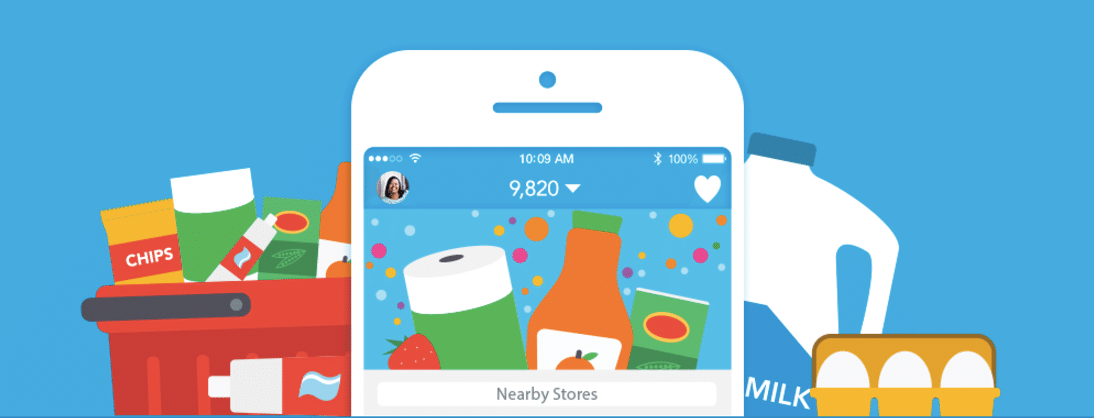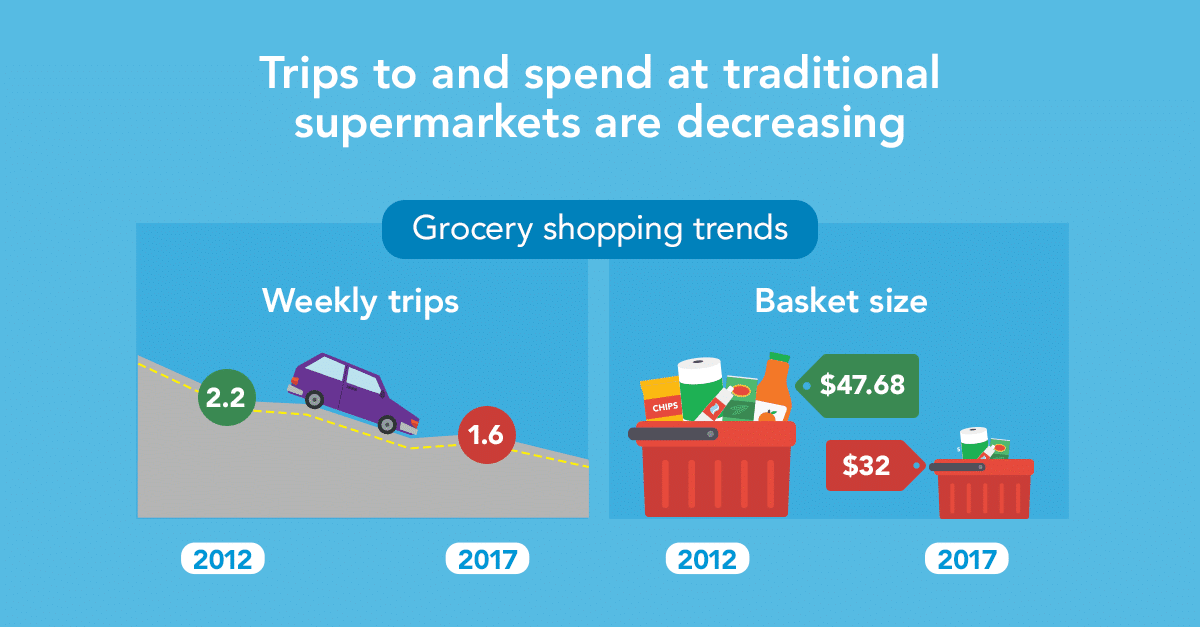Incredible change has taken place in the US recently. Our country is different. The world is different. We’re in a populist era, which means things are changing for retailers, grocers and brands.
Today’s American shopper
Most Americans aren’t seeking convenience-focused services such as weekly meal boxes or online ordering. In fact, last year only 3% of Americans purchased groceries online. Most households are deeply value conscious and visit their local grocery stores 1.6x per week on average.
Many marketers live and/or work in the major urban hubs, which can be dangerous for brands and retailers. It’s clearer than ever that coastal cities operate as silos that don’t represent the country at large.
It is crucial for brands and retailers to be in touch with the communities they serve.
Most of our users at Shopkick are average income mothers from middle America looking for deals and rewards for making purchases. Therefore, it’s crucial that our Postmates and Instacart-loving employees, based in the tech and agency hubs of New York, Chicago and Silicon Valley, understand that this segment has different needs and motivations than their own. We learn from our audience’s behavior, and we deliver the most relevant incentives for each touchpoint along their shopping journey: at home, when they are out and about, when they are near the store, and as they peruse the aisles.
One way to do this is to literally stay in touch with shoppers. Ask them what they like about a product or a store and what they don’t. Usually, it will circle back to the way it makes them feel. We are all human after all, and purchasing decisions are psychological and emotional.
Another important initiative is to help shoppers feel connected to your brand. They want to be rewarded and appreciated for spending their hard-earned money to take care of their families. Businesses need to understand and respect customers by offering products, services and experiences that align with their lifestyles.
For example, by spending in-person time with our customers and closely analyzing their in-app behavior, we know Shopkick customers are engaging with branded content and video in our app from their homes. Each user spends about 2.5 hours per month in the app – browsing products, watching videos, looking for kick earning opportunities, and planning her trip.
Respecting your audience’s motivations, budgets and behaviors does not have to come at the expense of business requirements. For example, discounts and coupons may influence shopping behavior, however they also cut into margins and could negatively impact the brand. As an alternative, offering rewards creates ‘moments of joy’ for shoppers, and those feel-good associations with your brand or store can increase purchases. We’ve found that rewards will motivate shoppers to go to a different retailer to buy favorite products, or to try a different brand than they typically purchase.
Understand and appreciate the shoppers of today to remain current and hit your goals. Leverage mobile behaviors. Recognize loyalty. Create a rewarding experience. And don’t forget to make it fun.



